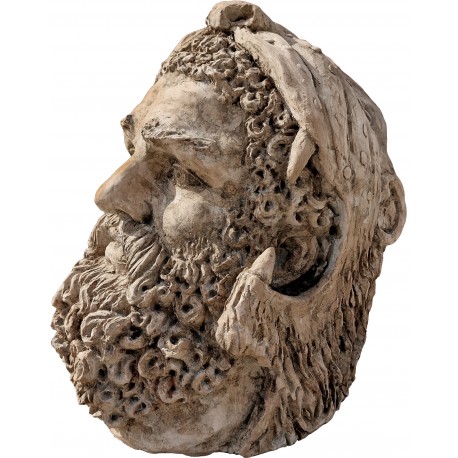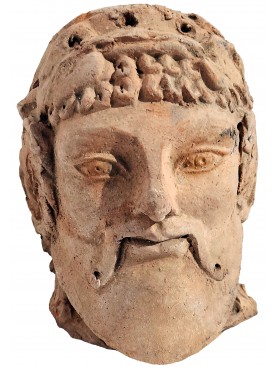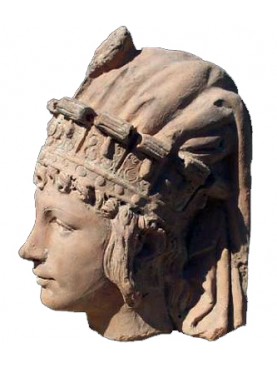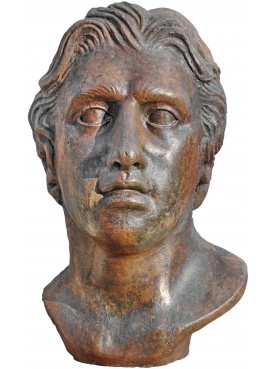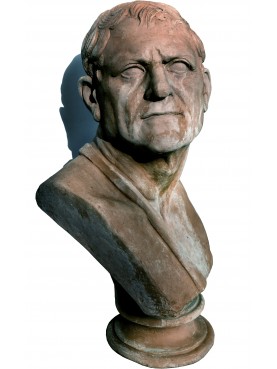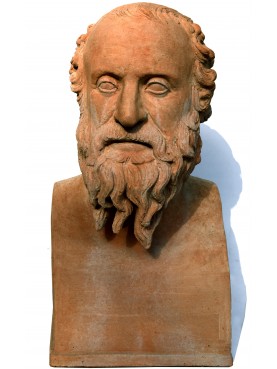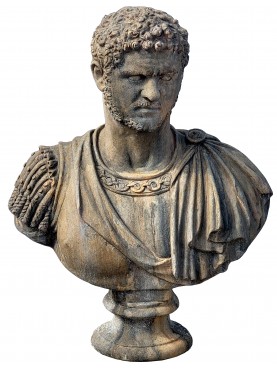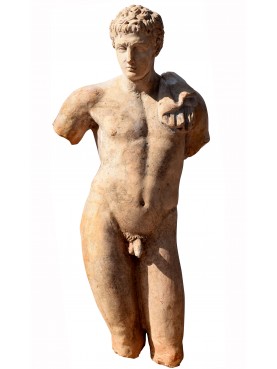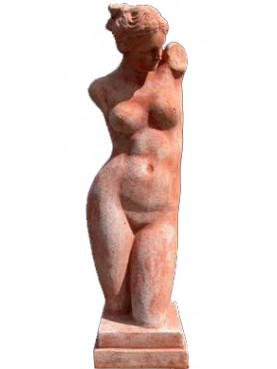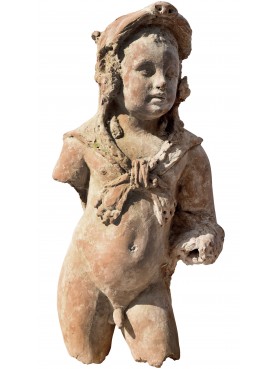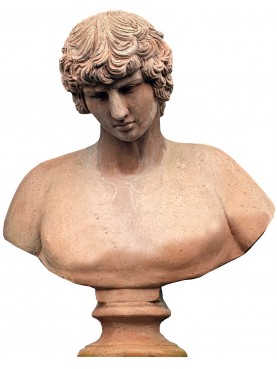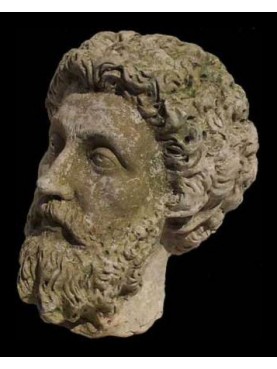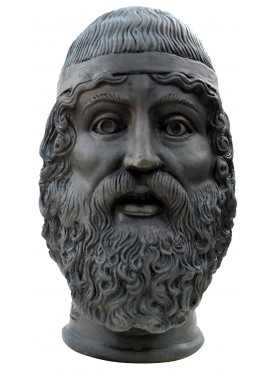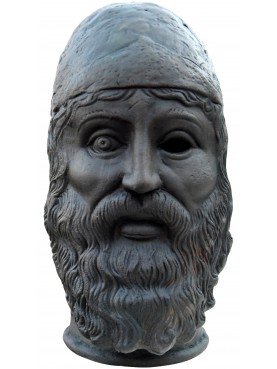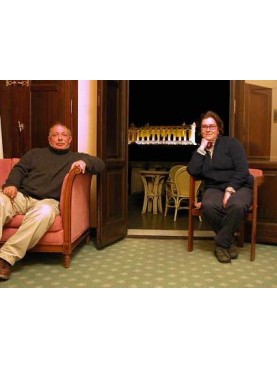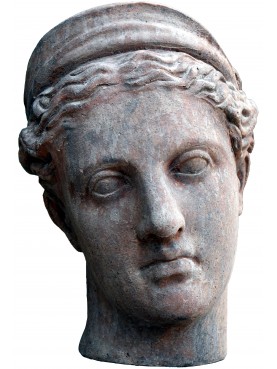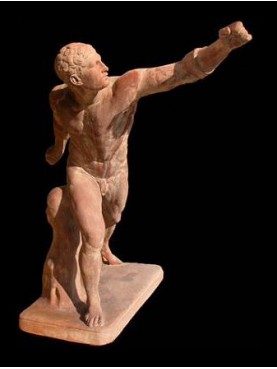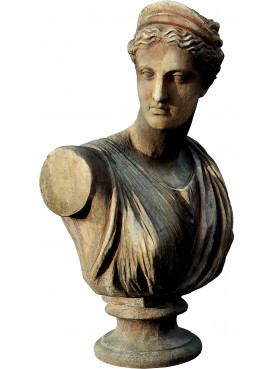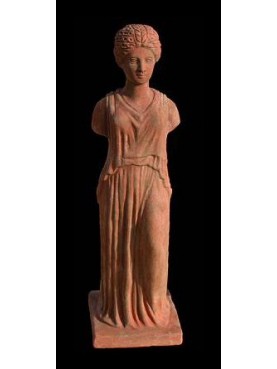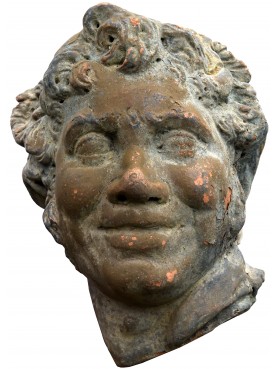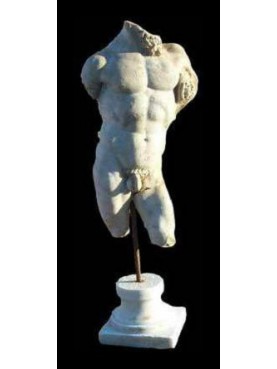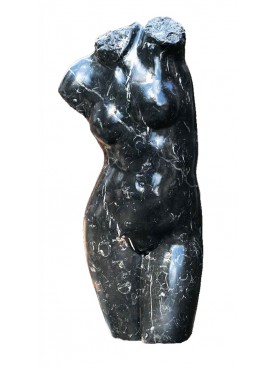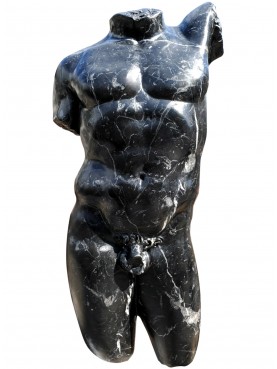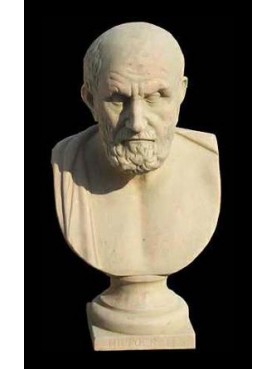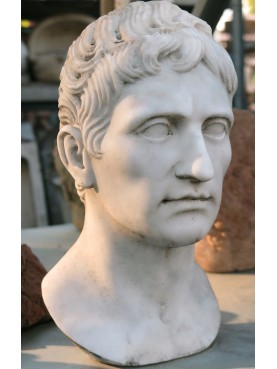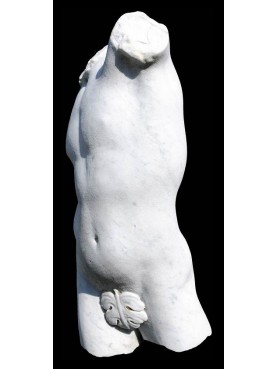Head of Hercules with the skin of the Nemean lion
Head of Hercules with the skin of the Nemean lion
New
The head of Heracles (Hercules) with the skin of the Nemean Lion, loosely based on the statue of Heracles and his son Telephos located in the Louvre Museum in Paris. Sculpture made by hand without the aid of form, this is a real sculpture, every time it is produced it is always different from the previous one. Museum base in white Carrara marble included.

1 Available
Data sheet
| Height | 17.32 in | 44 cm |
| Length | 14.57 in | 37 cm |
| Depth | 11.42 in | 29 cm |
| Weight | 0 lbs | testa 18 + base 23 Kg |
| Total weight | 90.39 lbs | 41 Kg |
| Square base | 7.87 in X 7.87 in X 7.87 in | 20 X 20 X 20 cm |
| Historical period | Roman copy of the 1st-2nd century. A.D. from a Greek original of the IV. sec. B.C. | |
| Manufacturing | Recuperando srl | |
| Material | HAND MODELED terracotta | |
| Museum where the Original is exhibited | Louvre (Paris) | |
| Museum cataloging number | MR219 | |
| Note 01 | Found on the Esquiline before 1551, then merged into the Este collections and transferred to Tivoli. |
More info
The Nemean lion was a monster in Greek mythology that lived at Nemea. Eventually, it was killed by Heracles (Hercules). Because its golden fur was impervious to attack, it could not be killed with mortals' weapons. Its claws were sharper than mortals' swords and could destroy any strong armour. In Bibliotheca, Photius wrote that the dragon Ladon, who guarded the golden apples, was his brother.
The first of Heracles' twelve labours, set by King Eurystheus (his cousin), was to slay the Nemean lion.
Heracles wandered the area until he came to the town of Cleonae. There, he met a boy who said that if Heracles slew the Nemean lion and returned alive within 30 days, the town would sacrifice a lion to Zeus; if he did not return within 30 days or he died, the boy would sacrifice himself to Zeus.[5] Another version claims that he met Molorchos, a shepherd who had lost his son to the lion, saying that if he came back within 30 days, a ram would be sacrificed to Zeus. If he did not return within 30 days, it would be sacrificed to the dead Heracles as a mourning offering.
While searching for the lion, Heracles fetched some arrows to use against it, not knowing that its golden fur was impenetrable; when he found the lion and shot at it with his bow, he discovered the fur's protective property when the arrow bounced harmlessly off the creature's thigh. After some time, Heracles made the lion return to his cave. The cave had two entrances, one of which Heracles blocked; he then entered the other. In those dark and close quarters, Heracles stunned the beast with his club. He eventually killed it by strangling it with his bare hands.
After slaying the lion, he tried to skin it with a knife from his belt, but failed. He then tried sharpening the knife with a stone and even tried with the stone itself. Finally, Athena, noticing the hero's plight, told Heracles to use one of the lion's own claws to skin the pelt.
When Heracles returned on the thirtieth day carrying the carcass of the lion on his shoulders, King Eurystheus was amazed and terrified. Eurystheus forbade him ever again to enter the city; in the future, he was to display the fruits of his labours outside the city gates. Eurystheus warned him that the tasks set for him would become increasingly difficult. He then sent Heracles off to complete his next quest, which was to destroy the Lernaean Hydra.
Heracles wore the Nemean lion's coat after killing it, as it was impervious to the elements and all but the most powerful weapons. Others say that Heracles' armour was, in fact, the hide of the Lion of Cithaeron.
According to Alexander of Myndus, Heracles was helped in this labour by an Earth-born serpent, which followed him to Thebes and settled down in Aulis. It was later identified as the water snake which devoured the sparrows and was turned into stone in the prophecy about the Trojan War.
The 12 Labors of Hercules:
- Slay the invulnerable Nemean lion and take its skin as a trophy;
- Slay the immortal hydra of Lerna;
- Capturing the Cerinea doe;
- Catching the Erymanthian boar;
- Cleaning the Augean stables in one day;
- Disperse the birds of Lake Stymphalus;
- Capturing the Cretan Bull;
- Stealing Diomedes' mares;
- Taking possession of the belt of Hippolyta, queen of the Amazons;
- Stealing the oxen of Geryon;
- Steal the golden apples of the garden of the Hesperides;
- Bring Cerberus, the three-headed guardian dog of the Underworld, alive to Mycenae.

